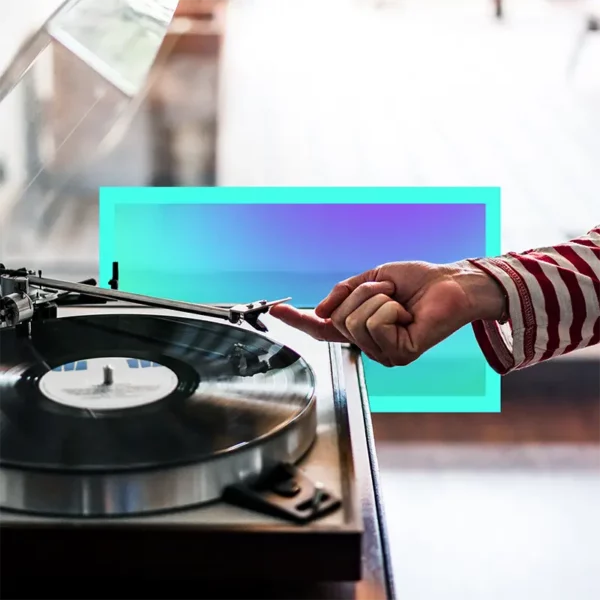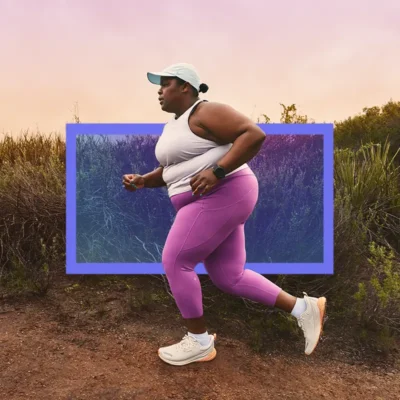ROHAN GUNATILLAKE: I’ve been thinking a lot recently about how our external environment can really affect our inner lives. It got me reflecting on the little rituals we do at home that support our wellbeing. Me and my family have the things that we do, but I was curious to hear from my colleagues.
So I got to chatting with our producer Dorothy and we thought it might be fun to ask around the wider team for their pointers. What works for them when it comes to bringing more joy, calm and connection to their homes.
So many of the team shared their suggestions for what they do in and around their homes to create a certain inner mood. For some, it was burning some fragrant wood or incense, others talked about the importance of their pets or taking a walk in nature. All in service of our external space helping us shift, and transitioning between one way of being, into another.
CHRIS McLEOD: Hi Rohan.
GUNATILLAKE: I’d love for you to share the practice you mentioned to me, if that’s okay.
McLEOD: Of course. In the evenings when I have my kids, there’s a transition moment after I finish work for the day. I shut my laptop, and walk into the living room where my kids are on their iPads. I’m trying to let go of the stress of the day, and my kids are transfixed on their screens. It’s time to start thinking about what we’re going to do for dinner.
Before I start cooking, I put on a record. I love the physical act of flipping through my collection, pulling it from the sleeve, and placing it on the turntable. It could be Fleetwood Mac, The Supremes, Foo Fighters, The Beatles… the genre doesn’t matter. As the needle drops, I notice a shift in the atmosphere. We can all feel it. The iPads get put back on the chargers, my kids come into the kitchen and we talk about our day as I cook. We keep listening to records all through dinner.
This physical act of playing a record changes the internal environment of each of us. Our moods are lifted, especially my own. And we’re able to spend the evening connecting with each other.
GUNATILLAKE: Thanks, Chris, for sharing that.
McLEOD: Thank you Rohan.
GUNATILLAKE: Chris uses the term transition moment here. Transition is a really important word for me when it comes to how we practice mindfulness at home. As we move around where we live, move from room to room, move into the home from the outside world, each of those transitions can be an invitation — an invitation to be awake. So, let’s pull out the different types of transition in Chris’s comments.
The first one happens when he finishes work and transitions from a worker and colleague to a father and cook. Like Chris, many of us now work from home and while there are many benefits to that, it does mean that the boundaries between different parts of our life have changed, if not collapsed entirely.
If we’re lucky enough to have a room where we work, which is different to the rest of the house, we can literally use the doorway as a transition device, a portal. Moving through it, we intentionally let go of what has come before — the stresses, tasks and ongoing thought patterns of work. And moving through the portal, we enter a new world, with new possibilities, with new objectives. This portal, an opportunity, taking care not to carry through any of the challenges of our work life into this next role. So whether it’s a door in the home or our front door, that’s something you might want to try in this next week. Making the doors between our work selves and our home selves special. Taking a deliberate, mindful pause before you enter. Then walking through and choosing to carry fresh, positive energy with you.
The second thing that struck me from what Chris shared was how he used music. Putting on an album as a way to mark that this is now a new part of the day, with a new soundtrack. What I love is that Chris is using a sense he already uses so much in his work — sound, but in an entirely different way. Even though his children aren’t with him yet, the music being on heralds their arrival, greets them and then provides the container for dinner, until everything that has been made with love has been eaten.
We are sensory beings — it’s how we know the world, and the sense input in our homes is so important to how we feel in our homes. So this is my second invitation for the week ahead: choose a sense, be that smell, sight, touch or like Chris, hearing. And think carefully about how you might play with that sensescape in your home to encourage wellbeing. Chris has totally inspired me to play more ambient music in the house while the kids are around. We tend to just play specific songs rather than whole albums but I love the idea of that. What are you going to do?
We’re coming close to the end of the episode and with our theme of transition, you’ve been doing a fair bit of listening so far. So how about we transition from being a listener to being a meditator.
Softening the body, we invite the breath into our awareness.
Holding the breath and its movements like we might hold a puppy or a baby.
Our attention soft and gentle, but complete.
Interested in how even this ordinary thing like the breath is itself full of transitions.
In breath becoming outbreath.
Out breath becoming in breath.
Each of these transitions is a chance to rededicate the energy.
Each of these transitions a chance to start again.
Each of these transitions a chance to notice something new.
If we can look closer.
There are subtler transitions here too.
The start of the in breath becoming the middle of the in breath.
The middle of the in breath becoming the end.
The gap between the in breath and the out breath like a limbo; it too has its boundaries.
I’ve always been fascinated by a particular transition in mindfulness — the transition between when we’re meditating and when we’re not.
And here is one of the secrets I’ve learned.
What would it be, if at the end of our formal little meditation here, with me guiding you, we don’t actually stop? What if we take the same level of care and openness and brightness of awareness into what we do next?
What if the transition between meditating and not-meditating never happens?
There’s one more thing from what Chris does that I want to finish on. What he describes — the act of cooking and music and sharing the food — it’s a ritual. It’s the kind of thing that when his children are grown up, they’ll remember forever, and if they have them, talk to their kids about. That aspect of Chris’s words have therefore made me wonder: what are the rituals we have at home? And thinking ahead, what rituals can I help come into being that encourage community, communication, connection, communion?
So for the week ahead, if you’d care to join me… how about you take some time to explore one or more of these themes.
First there was the idea of doorways as opportunities or portals, using them to drop the mental momentum from work and emerge fresh for what comes next. Then, there was curating of sounds or smells or the objects in our home to help shift ourselves towards qualities we are looking to grow. Finally, there was the idea of rituals — rituals we can continue or initiate to develop more connection and communion, either with ourselves or with others. There’s no wrong way to explore these ideas, just adventure.
Thank you to all the team at WaitWhat for sharing your pointers of how you use your home to support your wellbeing and of course, thanks to Chris, you’re welcome back anytime.
And thank you. Go well.
We’d love to hear your personal reflections from today’s meditation. You can find us on all your social media platforms through our handle @MeditativeStory. Or, you can email us at: [email protected].






